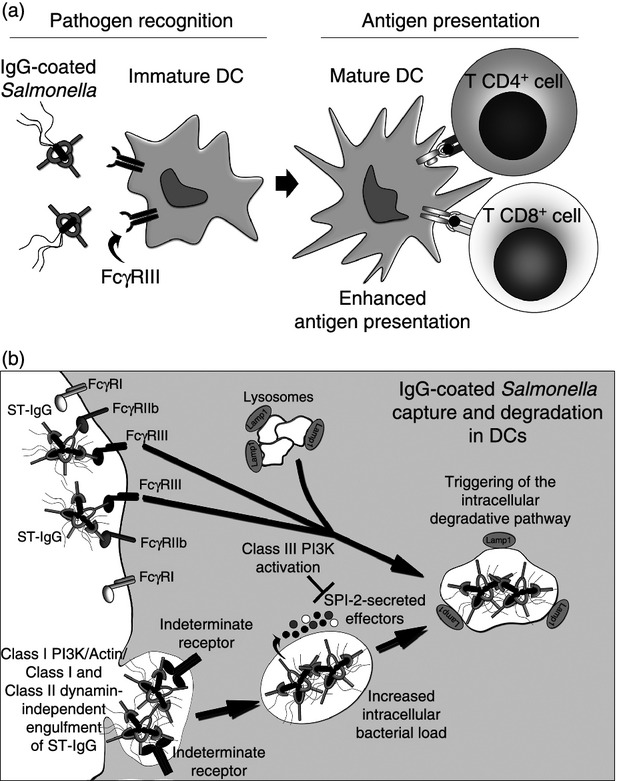Figure 2.

Fcγ receptor-mediated enhancement of T-cell priming by dendritic cells (DCs) after recognition and degradation of Salmonella-derived antigens. (a) After IgG opsonization, Salmonella can be recognized by FcγRIII expressed on the surface of DCs. Then, these cells are able to present bacterial-derived antigens MHC-I and MHC-II to CD8+ and CD4+ T cells, respectively. IgG opsonization can restore antigen presentation by DCs infected with Salmonella. (b) IgG-opsonized Salmonella engages FcγRIII on the surface of the DCs, triggering an intracellular class III phosphatidyl inositol 3 kniase (PI3K) -dependent degradation pathway, which enhances fusion of the Salmonella-containing vacuoles (SCV) with lysosomes (Lamp1+). SCV-containing IgG-coated bacteria are created after internalization of elevated numbers of Salmonella complexes in an FcγRs/class I PI3K/Actin/Class I and Class II and dynamin-independent mechanism. Internalization is driven by an unidentified receptor, which could recognize bacterial surface molecules unblocked by IgG-opsonization. Once inside the SCV, Salmonella still remain able to secrete Salmonella pathogenicity island 2 (SPI-2) -derived virulence determinants. As a result of IgG opsonization, antigen capture, degradation and presentation by DCs are significantly enhanced.
